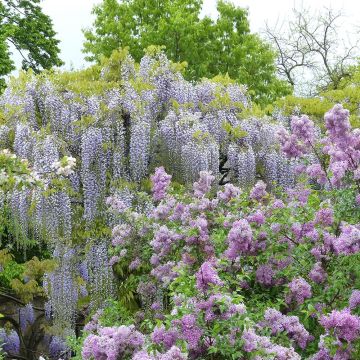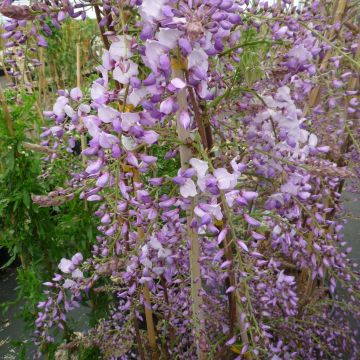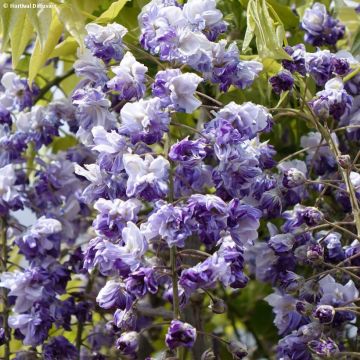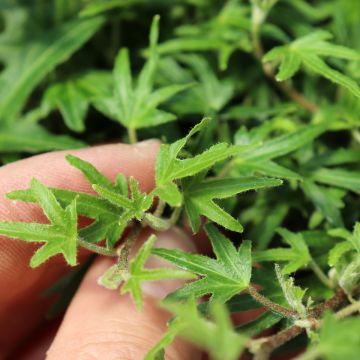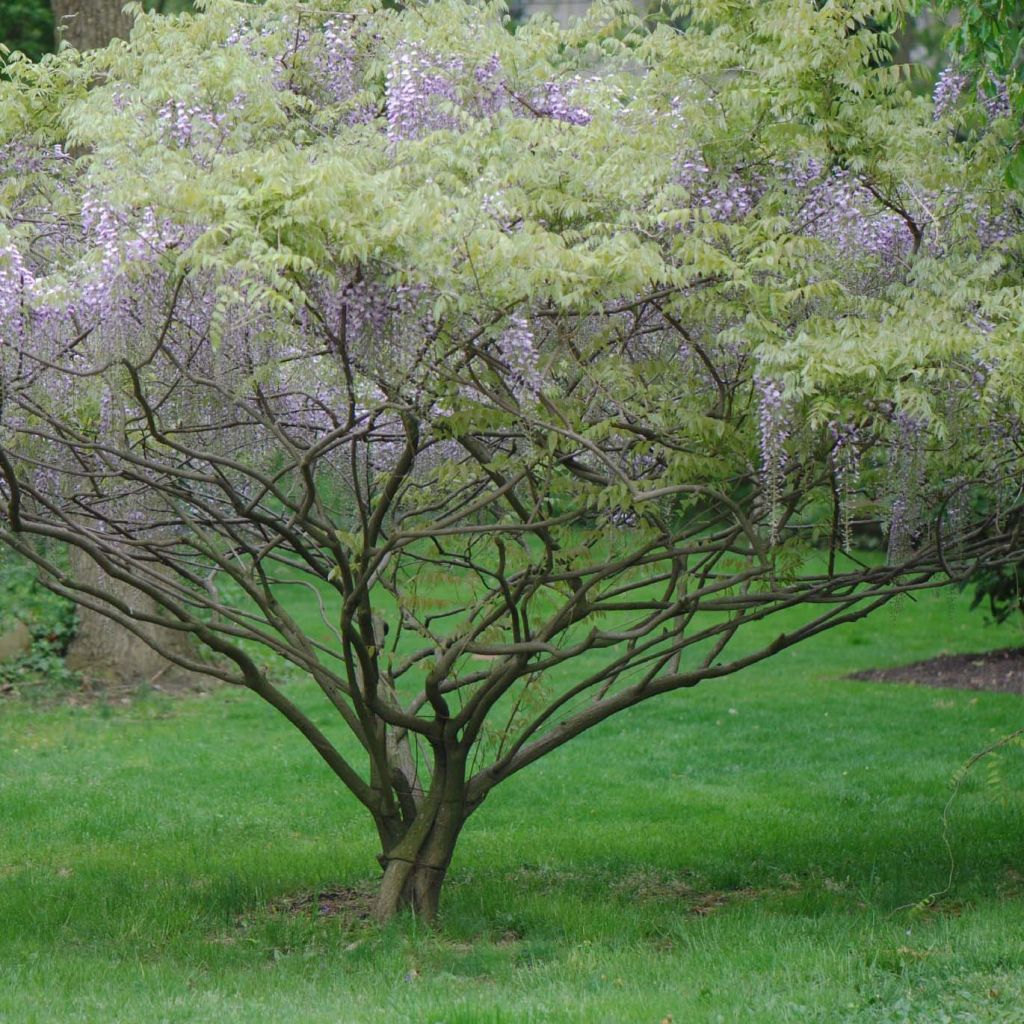

Wisteria x formosa
Wisteria x formosa
Wisteria x formosa
This item cannot be shipped to the selected country
Delivery charge from €5.90
Oversize package delivery charge from €6.90
More information
Schedule delivery date,
and select date in basket
This plant carries a 6 months recovery warranty
More information
We guarantee the quality of our plants for a full growing cycle, and will replace at our expense any plant that fails to recover under normal climatic and planting conditions.
From €5.90 for pickup delivery and €6.90 for home delivery
Express home delivery from €8.90.
Oversize package: home delivery by special carrier from €6.90 per order..
Express home delivery from €8.90.
Does this plant fit my garden?
Set up your Plantfit profile →
Description
Wisteria x formosa is an exceptional hybrid with incredible vigour. Its beauty surpasses that of its two parents, Chinese wisteria and Japanese wisteria 'Alba'. This climbing plant has an unruly temperament. It often flowers from a young age, unlike most of its cousins. In the heart of spring, its bare stems display beautiful clusters of flowers with two shades of mauve, spreading a deliciously sweet fragrance through the garden. This voluptuous wisteria needs space and sunlight. Grow it up a sturdy support, such as an old tree, a large arbour, or a long fence at the edge of the countryside.
Wisteria x formosa is a horticultural selection dating back to 1905, obtained in Massachusetts (United States). It is a hybrid of Wisteria floribunda 'Alba', native to Japan, and its cousin, W. sinensis, the vigorous Chinese wisteria. All these plants belong to the Fabaceae family. Like its ancestors, it is a robust plant, relatively resistant to cold, and not very demanding in terms of soil (although it fears an excess of active limestone). It can grow in poor soils that are dry in summer if they are deep. Its roots are deep and trailing, and its foliage is deciduous in winter.
Its voluble stems eventually reach a length of about 12 to 13m (39 to 43ft) and spontaneously wrap around supports clockwise. The growth of new silky shoots is very rapid, about 2m (7 feet) in one season in moist soil. Flowering takes place in May, at about the same time as that of Chinese wisteria. The flowers bloom on plants aged 2 years and older. They develop on slightly foliated branches located near the main lignified stems. The flowers take the form of pendulous clusters of strongly scented blooms with purple-mauve standards, wings, and keels, measuring 25cm (10in) in length. All the flowers open at the same time on the cluster. The flowers are nectar-rich and attractive to bees.
After the flowers, hanging flat green pods appear. They are swollen at the level of the seeds, and turn brown when mature. The young bronze-coloured leaves appear and then turn a light green. They are 20 to 30cm (8 to 12in) long and divided into 13 to 15 ovate leaflets, giving the foliage a light appearance. Before falling in autumn, the leaves take on a beautiful golden colour. It can live well over 50 years.
Wisteria x formosa is one of the largest in its genus and is suitable for a large garden. It will require repeated pruning to be kept in more modest dimensions. It adapts to all climates, including hot and dry ones. However, it will not withstand cold climates. This vibrant plant is particularly useful for dressing up a large wall or covering a long unsightly fence. It wraps around a sturdy arbour and climbs up to the tree tops if left to its own devices. As it tends to smother nearby plants, plant it on its own in full sun (or partial shade in hot climates). Alternatively, plant it with vigorous honeysuckles, clematis, or climbing roses.
Report an error about the product description
Wisteria x formosa in pictures






Plant habit
Flowering
Foliage
Botanical data
Wisteria
x formosa
Fabaceae
Cultivar or hybrid
Other Wisterias
Planting and care
It is easy to grow, as long as the soil is sufficiently deep. It can grow in any garden soil, with a preference for poor soils. However, it prefers acidic to neutral soil, and may wither in excessively chalky soil. To improve its hardiness, plant it in well-draining soil and train it on a south-facing wall, as it will withstand very harsh winters more easily. Once established, it can withstand summer drought and requires no watering, even in hot climates. Plant it along a wall or train it on a sturdy pergola.
Pruning is recommended to promote better flowering. In March-April, after the last frost and when the buds have appeared, cut back the current year's branches after two or three buds and remove weak branches. Training pruning should be done in August.
Wisterias can be trained as trees by elevating them on a "parasol" stake measuring 1.5 to 2m (5 to 7ft), or used as ground cover in a large wild garden.
Planting period
Intended location
Care
This item has not been reviewed yet - be the first to leave a review about it.
Foolproof climbers
Haven't found what you were looking for?
Hardiness is the lowest winter temperature a plant can endure without suffering serious damage or even dying. However, hardiness is affected by location (a sheltered area, such as a patio), protection (winter cover) and soil type (hardiness is improved by well-drained soil).

Photo Sharing Terms & Conditions
In order to encourage gardeners to interact and share their experiences, Promesse de fleurs offers various media enabling content to be uploaded onto its Site - in particular via the ‘Photo sharing’ module.
The User agrees to refrain from:
- Posting any content that is illegal, prejudicial, insulting, racist, inciteful to hatred, revisionist, contrary to public decency, that infringes on privacy or on the privacy rights of third parties, in particular the publicity rights of persons and goods, intellectual property rights, or the right to privacy.
- Submitting content on behalf of a third party;
- Impersonate the identity of a third party and/or publish any personal information about a third party;
In general, the User undertakes to refrain from any unethical behaviour.
All Content (in particular text, comments, files, images, photos, videos, creative works, etc.), which may be subject to property or intellectual property rights, image or other private rights, shall remain the property of the User, subject to the limited rights granted by the terms of the licence granted by Promesse de fleurs as stated below. Users are at liberty to publish or not to publish such Content on the Site, notably via the ‘Photo Sharing’ facility, and accept that this Content shall be made public and freely accessible, notably on the Internet.
Users further acknowledge, undertake to have ,and guarantee that they hold all necessary rights and permissions to publish such material on the Site, in particular with regard to the legislation in force pertaining to any privacy, property, intellectual property, image, or contractual rights, or rights of any other nature. By publishing such Content on the Site, Users acknowledge accepting full liability as publishers of the Content within the meaning of the law, and grant Promesse de fleurs, free of charge, an inclusive, worldwide licence for the said Content for the entire duration of its publication, including all reproduction, representation, up/downloading, displaying, performing, transmission, and storage rights.
Users also grant permission for their name to be linked to the Content and accept that this link may not always be made available.
By engaging in posting material, Users consent to their Content becoming automatically accessible on the Internet, in particular on other sites and/or blogs and/or web pages of the Promesse de fleurs site, including in particular social pages and the Promesse de fleurs catalogue.
Users may secure the removal of entrusted content free of charge by issuing a simple request via our contact form.
The flowering period indicated on our website applies to countries and regions located in USDA zone 8 (France, the United Kingdom, Ireland, the Netherlands, etc.)
It will vary according to where you live:
- In zones 9 to 10 (Italy, Spain, Greece, etc.), flowering will occur about 2 to 4 weeks earlier.
- In zones 6 to 7 (Germany, Poland, Slovenia, and lower mountainous regions), flowering will be delayed by 2 to 3 weeks.
- In zone 5 (Central Europe, Scandinavia), blooming will be delayed by 3 to 5 weeks.
In temperate climates, pruning of spring-flowering shrubs (forsythia, spireas, etc.) should be done just after flowering.
Pruning of summer-flowering shrubs (Indian Lilac, Perovskia, etc.) can be done in winter or spring.
In cold regions as well as with frost-sensitive plants, avoid pruning too early when severe frosts may still occur.
The planting period indicated on our website applies to countries and regions located in USDA zone 8 (France, United Kingdom, Ireland, Netherlands).
It will vary according to where you live:
- In Mediterranean zones (Marseille, Madrid, Milan, etc.), autumn and winter are the best planting periods.
- In continental zones (Strasbourg, Munich, Vienna, etc.), delay planting by 2 to 3 weeks in spring and bring it forward by 2 to 4 weeks in autumn.
- In mountainous regions (the Alps, Pyrenees, Carpathians, etc.), it is best to plant in late spring (May-June) or late summer (August-September).
The harvesting period indicated on our website applies to countries and regions in USDA zone 8 (France, England, Ireland, the Netherlands).
In colder areas (Scandinavia, Poland, Austria...) fruit and vegetable harvests are likely to be delayed by 3-4 weeks.
In warmer areas (Italy, Spain, Greece, etc.), harvesting will probably take place earlier, depending on weather conditions.
The sowing periods indicated on our website apply to countries and regions within USDA Zone 8 (France, UK, Ireland, Netherlands).
In colder areas (Scandinavia, Poland, Austria...), delay any outdoor sowing by 3-4 weeks, or sow under glass.
In warmer climes (Italy, Spain, Greece, etc.), bring outdoor sowing forward by a few weeks.

































